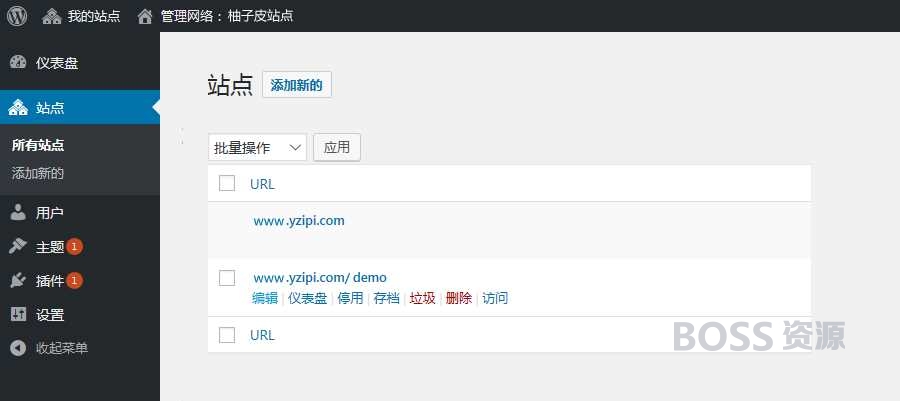今天给大家分享一个WordPress SEO优化小技巧,该技巧能够实现文章内的关键词标签自动添加内链。
内链的好外,自然就不用说了,它可以让百度蜘蛛在你的网站爬行更多的地方。
当然,很多WordPress插件也可以实现这个功能,但是今天AT互联给大家分享的是不用插件给文章关键词标签自动添加内链的方法。
那怎么如何让WordPress站点的文章关键词标签自动添加内链呢?其实我们只需要在主题目录下的functions.php文件中添加一段代码就可以实现了。
/* 自动为文章内的标签添加内链 */
$match_num_from = 1; //一篇文章中同一个标签少于几次不自动链接
$match_num_to = 1; //一篇文章中同一个标签最多自动链接几次
function tag_sort($a, $b){
if ( $a->name == $b->name ) return 0;
return ( strlen($a->name) > strlen($b->name) ) ? -1 : 1;
}
function tag_link($content){
global $match_num_from,$match_num_to;
$posttags = get_the_tags();
if ($posttags) {
usort($posttags, \"tag_sort\");
foreach($posttags as $tag) {
$link = get_tag_link($tag->term_id);
$keyword = $tag->name;
$cleankeyword = stripslashes($keyword);
$url = \"<a href=\"$link\" title=\"\".str_replace(\'%s\',addcslashes($cleankeyword, \'$\'),__(\'【查看更多[%s]标签的文章】\')).\"\"\";
$url .= \' target=\"_blank\"\';
$url .= \">\".addcslashes($cleankeyword, \'$\').\"</a>\";
$limit = rand($match_num_from,$match_num_to);
$content = preg_replace( \'|(<a[^>]+>)(.*)(\'.$ex_word.\')(.*)(</a[^>]*>)|U\'.$case, \'$1$2%&&&&&%$4$5\', $content);
$content = preg_replace( \'|(<img)(.*?)(\'.$ex_word.\')(.*?)(>)|U\'.$case, \'$1$2%&&&&&%$4$5\', $content);
$cleankeyword = preg_quote($cleankeyword,\'\'\');
$regEx = \'\'(?!((<.*?)|(<a.*?)))(\'. $cleankeyword . \')(?!(([^<>]*?)>)|([^>]*?</a>))\'s\' . $case;
$content = preg_replace($regEx,$url,$content,$limit);
$content = str_replace( \'%&&&&&%\', stripslashes($ex_word), $content);
}
}
return $content;
}
add_filter(\'the_content\',\'tag_link\',1);//WordPress 文章关键词自动内链
function tag_sort($a, $b){
if ( $a->name == $b->name ) return 0;
return ( strlen($a->name) > strlen($b->name) ) ? -1 : 1;
}
function tag_link($content){
$match_num_from = 1; //一个标签少于几次不链接
$match_num_to = 1; //一个标签最多链接几次
$posttags = get_the_tags();
if ($posttags) {
usort($posttags, \"tag_sort\");
foreach($posttags as $tag) {
$link = get_tag_link($tag->term_id);
$keyword = $tag->name;
//链接代码
$cleankeyword = stripslashes($keyword);
$url = \"<a href=\\\"$link\\\" title=\\\"\".str_replace(\'%s\',addcslashes($cleankeyword, \'$\'),__(\'更多关于 %s 的文章\')).\"\\\"\";
$url .= \' target=\"_blank\"\';
$url .= \">\".addcslashes($cleankeyword, \'$\').\"</a>\";
$limit = rand($match_num_from,$match_num_to);
//不链接代码
$content = preg_replace( \'|(<a[^>]+>)(.*)<pre.*?>(\'.$ex_word.\')(.*)<\\/pre>(</a[^>]*>)|U\'.$case, \'$1$2%&&&&&%$4$5\', $content);
$content = preg_replace( \'|(<img)(.*?)(\'.$ex_word.\')(.*?)(>)|U\'.$case, \'$1$2%&&&&&%$4$5\', $content);
$cleankeyword = preg_quote($cleankeyword,\'\\\'\');
$regEx = \'\\\'(?!((<.*?)|(<a.*?)))(\'. $cleankeyword . \')(?!(([^<>]*?)>)|([^>]*?</a>))\\\'s\' . $case;
$content = preg_replace($regEx,$url,$content,$limit);
$content = str_replace( \'%&&&&&%\', stripslashes($ex_word), $content);
}
}
return $content;
}
add_filter(\'the_content\',\'tag_link\',1);
文章来自AT互联https://www.at8848.cn转载请保留本链接,谢谢!









